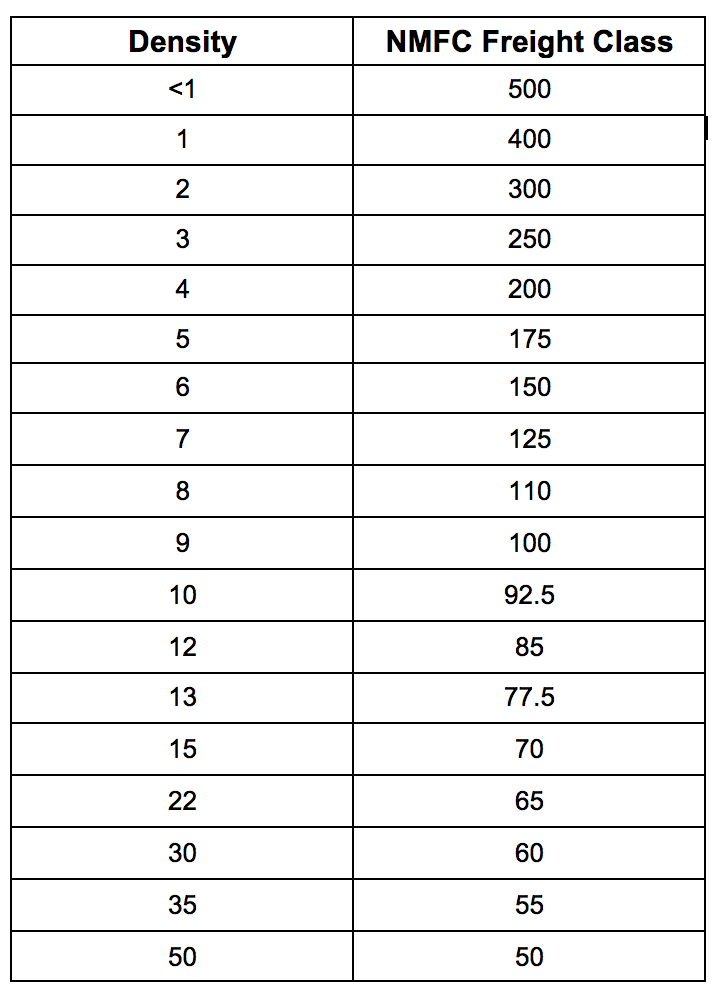Calculating Freight Class Codes: Estimating Your Shipping Costs
Calculating freight class codes helps you determine which NMFC class your shipment falls under. This, in turn, assists you in estimating your freight shipping costs accurately. There are a couple of crucial details to keep in mind when preparing your shipment to appropriately classify it, ultimately impacting your bottom line.
Why Calculating Your Freight Class Is Important
Freight class codes, also known as National Motor Freight Class (NMFC) codes, constitute a set of standardized freight pricing that ensures control within the freight industry. These codes are of particular significance if you’re dealing with less-than-truckload (LTL) shipments. They govern “transportability” and, consequently, play a direct role in determining the price you’ll pay for your shipment.
Freight class is determined by 4 major factors:
Stowability: How well your freight can be accommodated with other items. Is it perishable, flammable, or hazardous? Such factors may affect whether your shipment can be combined with other materials. Additionally, consider whether your freight is stackable, as it affects its compatibility with other shipments.
Liability: Does your freight have a high value? In such cases, concerns about potential damage or theft may increase. This elevated risk could lead to a higher freight class.
Ease of Handling: Evaluate the ease of managing your freight. Does it have any unique handling requirements? Is it fragile or hazardous? Special handling needs can result in a higher freight class.
Density: Measured in pounds per cubic foot, density represents the amount of space your freight occupies. This factor is pivotal in determining your freight class code and, consequently, your freight shipping cost. Shipments with higher density that occupy less space will have a lower cost compared to bulkier items. Calculating your freight’s density helps you estimate the class and associated costs.
How to Calculate Freight Class
Follow these steps to calculate your freight class:
Step 1: Measure the height, width, and depth of the shipment in inches. Measure to the farthest points, including skids or other packaging. If you have multiple pieces, repeat Step 1 for each piece.
Step 2: Multiply the three measurements (height x width x depth). The result is the total cubic inches of the shipment. If you have multiple pieces, calculate the volume for each piece and sum them to get the total cubic inches.
Step 3: Divide the total cubic inches by 1,728 (the number of cubic inches in a cubic foot). The result is the cubic feet of the shipment.
Step 4: Divide the weight (in pounds) of the shipment by the total cubic feet. The result is the weight per cubic foot, known as density. For shipments with multiple pieces, sum the weights of all pieces before dividing by the total cubic feet of the shipment.
Next, use the calculated freight density to estimate the freight shipping class using a reference table. Keep in mind that this number is only an estimate. The freight forwarding experts at Omni Logistics will confirm your exact freight shipping class code.

How to Save on Freight Class Shipping Charges
Packaging Considerations: When calculating your shipment’s weight, account for the weight of the packaging. For example, a crated engine falls under NMFC class code 70, while a palletized engine falls under class code 85. The type of packaging you use for freight shipping can significantly influence the final weight, affecting your shipping class code and overall cost.
Accurate Classification: Ensure proper classification of your items. Different items have distinct classifications within NMFC. For instance, while both an engine and a rollercoaster part are machines, the rollercoaster part is classified as NOI (Not Otherwise Indexed). The professionals at Omni Logistics can assist in accurately classifying your items, saving you unnecessary costs due to classification errors.
Managing Dimensional Weight: As mentioned earlier, density is a crucial factor in freight shipping. It considers both dimensional weight and actual weight. Ideally, your dimensional weight should be lower than the actual weight. This translates to your shipment occupying less space in the truck or shipping container, resulting in a lower freight classification and cost savings.
With the help of Omni Logistics, you can streamline the shipping process, ensuring accurate class codes and preventing unnecessary expenses.



